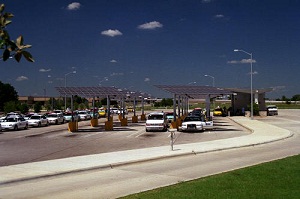What Colorado can learn from Ontario’s clean energy revolution, part 2
 The idea is to make solar installations attractive to investors now so the industry will grow and the technology will drop in price and become a bigger contributor to the province’s energy portfolio, Bowerbank said.
The idea is to make solar installations attractive to investors now so the industry will grow and the technology will drop in price and become a bigger contributor to the province’s energy portfolio, Bowerbank said.
Ontario will reduce the feed-in-tariff payouts gradually over coming years as the technology grows in popularity and falls in cost.
The feed-in-tariff is largely responsible for the rapid rise of renewable energy, which provided 0 percent of the province’s energy needs in 2003 to 2 percent in 2010.
“What we want is for renewable to be the same cost as other, traditional energy,” he said.
The country has promoted large utility-scale solar projects as well. The Sarnia solar plant near the border with Detroit, Mich., is currently the largest solar plant in North America, Bowerbank said. It produces 80 megawatts per year.
There are several larger projects in the works in the U.S., but Sarnia is still the biggest, and Bowerbank said the province has other utility-scale projects in the pipeline.
Ontario is also attracting solar panel manufacturers, he said. The province passed a law requiring 60 percent of the components in clean energy technologies to be manufactured in Ontario. The law helps to insure that the solar cells and panels themselves are made in Canada instead of China or Germany, encouraging economic and job growth. But the law is controversial and has created some tension with the World Trade Organization. He said he’s not sure the law will stick.
In addition to changing production, the province is trying to manage its power more intelligently. It has already installed 3 million smart meters and expects to retrofit every building and home in the province by the end of 2011, Bowerbank said.
It has already reduced peak demand by 1,700 megawatts since 2003 and hopes to reduce peak demand by a total of 7,000 megawatts by 2030, he said.
He detailed some of the more innovative things the province is doing, including building and promoting companies to build electric car-charging stations and having home and commercial builders consider energy needs, including car-charging station in new construction.
Bowerbank said he believes electric cars will take over by 2050.
Story continues here.
Pictured: Solar carports.



